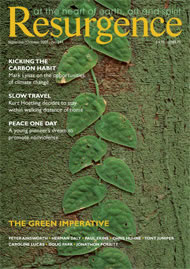Andrew Wood left Falmouth College of Art in 1972 and for some years his focus was on relatively small-scale figurative ceramics that were luminous with delight and humour and affectionate satire. In 1978, seemingly out of the blue, he was overtaken by an astonishing avocational venture. Still in his twenties, he fell for and gained possession of a beautiful derelict Georgian chapel in rural Gloucestershire. Here he founded – which involved single-handed fund-raising, administering, programming, maintaining, running workshops and much else – the Prema Arts Centre. Prema (‘Divine Love’) is still very much in existence, but originally formed a radical example of how one person’s vision, committed energy and total dedication can inform a venture with his or her own creative integrity. Prema soon attracted a following of volunteers, and demonstrated how a small-scale centre, when genuinely alive, can, without burdening bureaucracy, draw life into a whole community, as well as enrich it from within,.
After some ten years Wood felt the need to attend to his own work, and he handed Prema on. In lengthy isolation in France his modelling showed how during the time at Prema a remarkable development had taken place. He created an immense tableau of quite large figures in relief. The predominantly blue figures appeared in some way removed from consciousness, interrelated and yet adrift in a form of amniotic dance. There was the feeling that the artist had moved on from the light-heartedness of his earlier work and that a profound transition was under way.
He then moved to California to undertake an ambitious commission to make a series of relief portraits of great blues musicians for a chain of music venues.This interrupted for a time the upheaval that had begun within. But back in England the subjects he explored were still further removed from the former world of delight: a series of unattached heads, all divided from bodily feeling – almost a total suspension of life. Hard to imagine that they expressed anything other than a subjective crisis that carried a far-reaching relevance – as if registering a planetary crisis resulting from the alienation of humanity, feeling humanity itself; in other words, from the experience of the feminine.
A sign of return from the dead place came in a major piece of a man and a woman: The Architect and the Therapist. The man’s head carries like some malignancy a high-tech urban landscape, while the woman’s breasts are smiling heads. And then astonishingly comes a figure fully alive. St Francis. St Francis? To me this is more Lazarus – awoken, come back to life. He wears a shroud-like loin-cloth and is seated. With an expression of quiet amazement he stares down at the small bird in his cupped hands. He is contemplating the wonder of what he felt he had lost: the image and the reality of his own soul.
If I’m right, then what I’ve touched on is maybe one of the imagination’s most precious gifts to us – the revealed mystery of rebirth. One might expect Wood to be into a new vein of ‘incarnate’ affirmation. But he is always ready to startle with enigma, an enigma that he seems glad to be part of. Again transition – his latest work is purely abstract. If, that is, the rediscovery of delight, engagement with bright colour and fecund curves and renewed response to the feminine can be called abstract!
It is as if after whatever inner journey has been undertaken, the artist has finally realised that if renewal is to be well founded it must issue from an absolute beginning. It must reach back beyond the first throes of confused sensate humanity, back to some protozoic departure point. All of which could be a metaphor for the comprehensive overhaul required if a solution is to be found to the current problems of humanity!
Further information: 01273 476693 - www.andrew-wood.com







